ADVERTISEMENT
If you’re like most people, you probably enjoy a fresh cup of coffee each and every day.
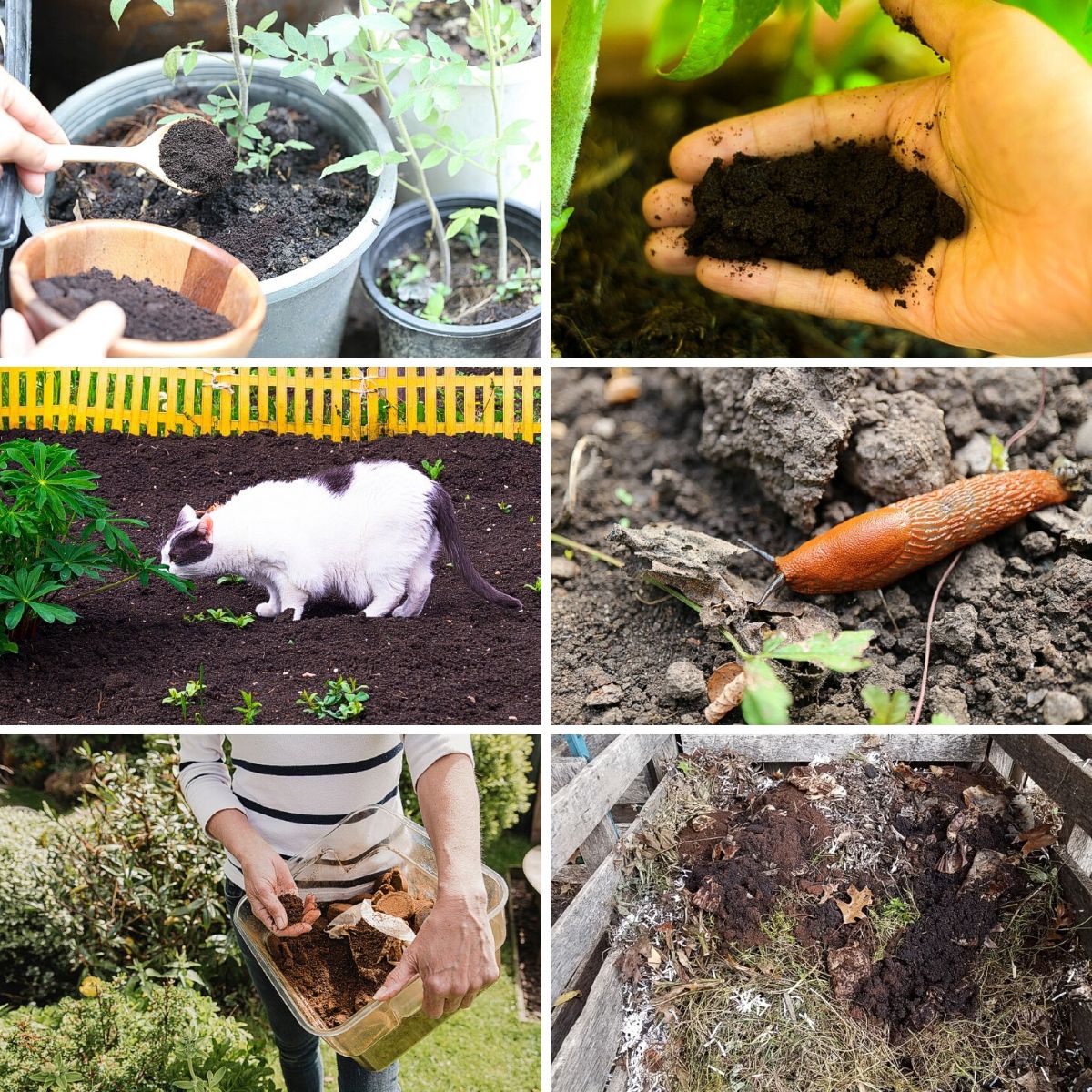
But what are you doing with the spent grounds? If you’re throwing them in the trash can after your coffee is prepped, you’re wasting your money. There are plenty of ways you can reuse your coffee grounds around the house and in your garden.
Here are some of the best tips for using up the grounds from your favorite cup of Java – as well as tips on how to get started.
How to Use Coffee Grounds in the Garden: 9 Different Ways to Get You Inspired!
1. Composting
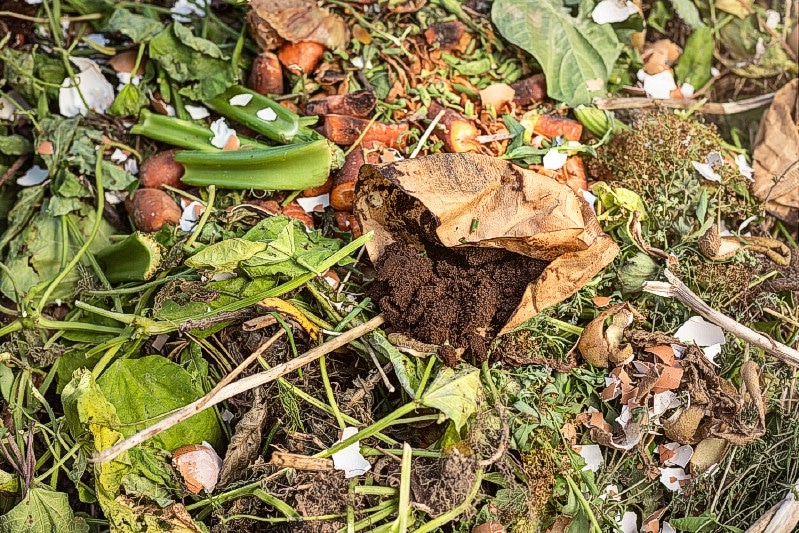
Composting coffee grounds is a simple and effective way to reuse their nutrients in your garden later on. Composting coffee grounds will help add nitrogen to your soil without providing too much all at once. Plus, you won’t be adding unnecessary materials back to the landfills.
You can throw the entire contents of your coffee pot, grounds, filter, and all, into your compost bin. As a “green” compost material, they’ll break down quickly and supply nitrogen as well as other beneficial nutrients to your pile.
You can compost coffee grounds both in a traditional outdoor compost bin as well as an indoor vermicomposting (worm composting) system. Read up on what you can and can’t compost, and our collection of diy compost bins.
2. Fertilizer
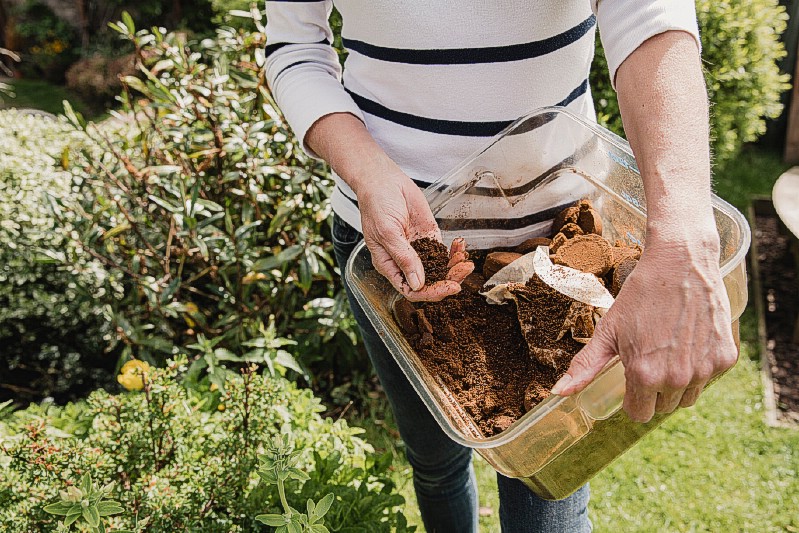
Coffee grounds can also be used directly as fertilizer. All you need to do is add them directly to the soil.
Coffee grounds, when unwashed, can raise the acidity of your soil (or lower its pH). While this is good for acid-loving plants, it’s something you’ll need to be aware of if you are using unwashed grounds. If your grounds are spent, you don’t need to worry – the grounds are nearly neutral in their pH.
Otherwise, coffee grounds are great to use as fertilizer because they add both nitrogen and organic matter. Adding organic material can help improve the structure of your soil. It will drain better, hold water better, and be better aerated. Coffee grounds can even attract beneficial microorganisms and earthworms, both essential for good soil health!
To use coffee grounds as fertilizer, simply add them to your soil prior to planting. You can also work them directly around the base of your plants. Additionally, you can check out our list of DIY organic fertilizers.
3. Mulch
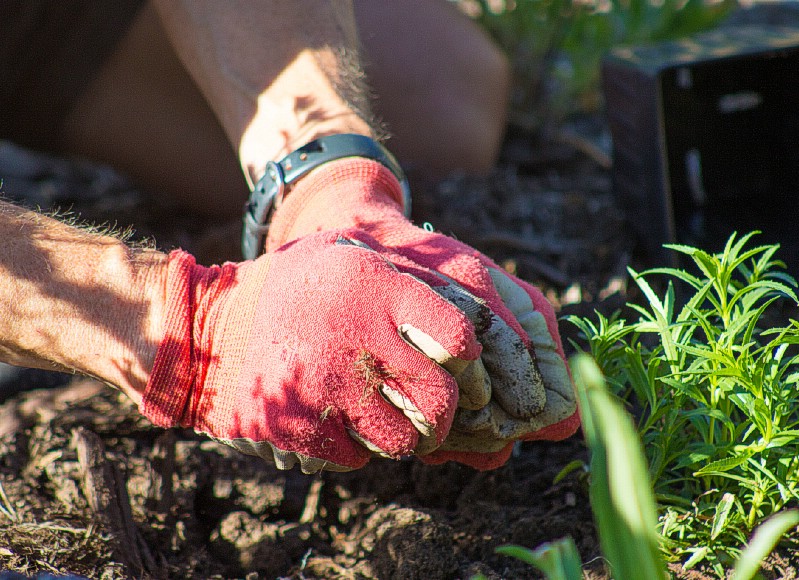
You may not think of coffee grounds when you think of mulch, but the reality is that the remainder of your morning cup of JOe can really work wonders when used as a mulch. Mulch is beneficial in that it helps your plants stay moist while also preventing weeds. Coffee is lovely to look at too, providing a stark contrast against the green backdrop of your plants. Check out our ultimate guide to mulching to master this easy gardening skill.
4. Keep Cats Out
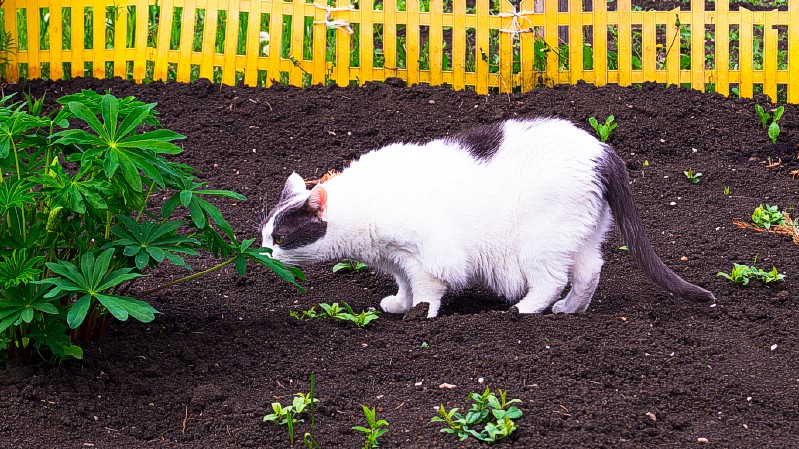
If neighborhood cats have been using your garden as a litter box, consider sprinkling some coffee grounds nearby to keep them out. For whatever reason, cats don’t like doing their business around the corner and will quit using your vegetable and flower beds as their bathroom.
5. Suppress Weeds
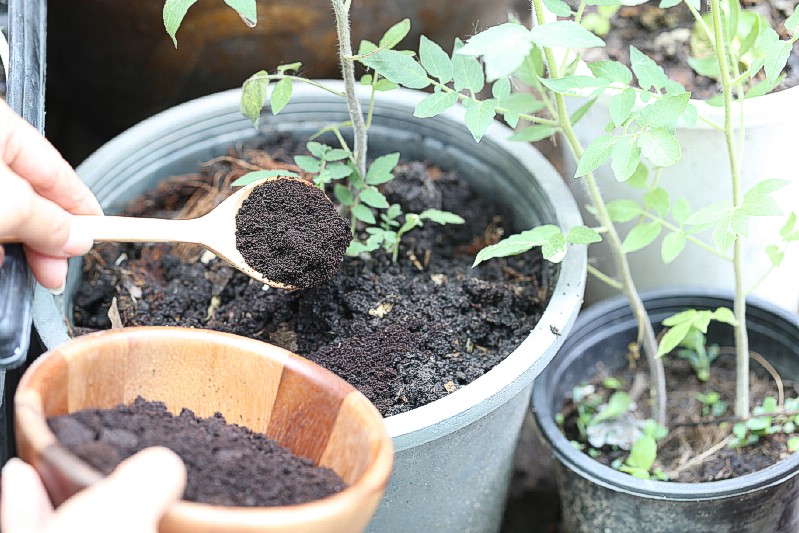
Fresh coffee grounds are believed to have some allelopathic properties (this means that they prevent plants from growing). Therefore, you may be able to use them to suppress weeds and various fungal pathogens, too.
6. Change Soil pH
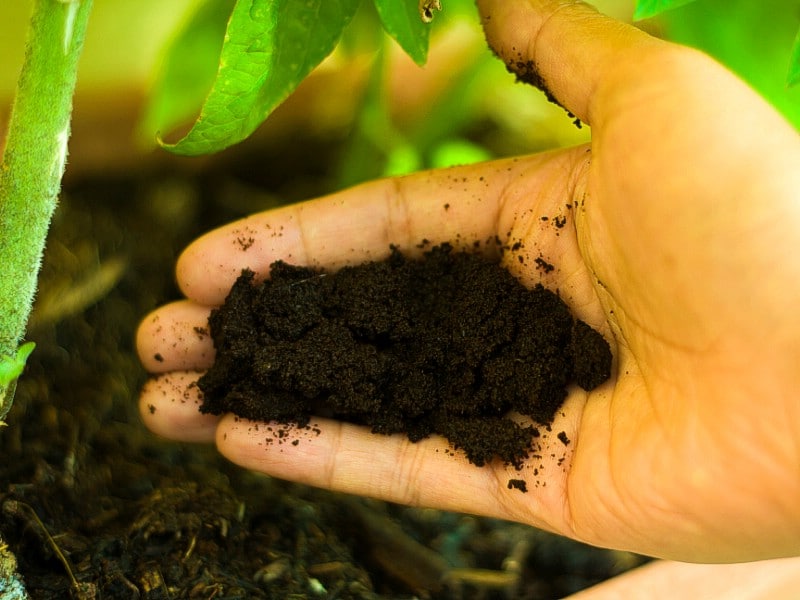
If you’ve been struggling with overly alkaline soil, you may want to add some coffee grounds. Of course, you should always conduct a soil test first, to be sure, but if you know your soil is overly alkaline and needs to be acidified, just reach for the coffee grounds. You can dig them into the soil at a depth of seven to eight inches and you’ll find that your soils’ acidity naturally begins to rise.
7. Growing Mushrooms
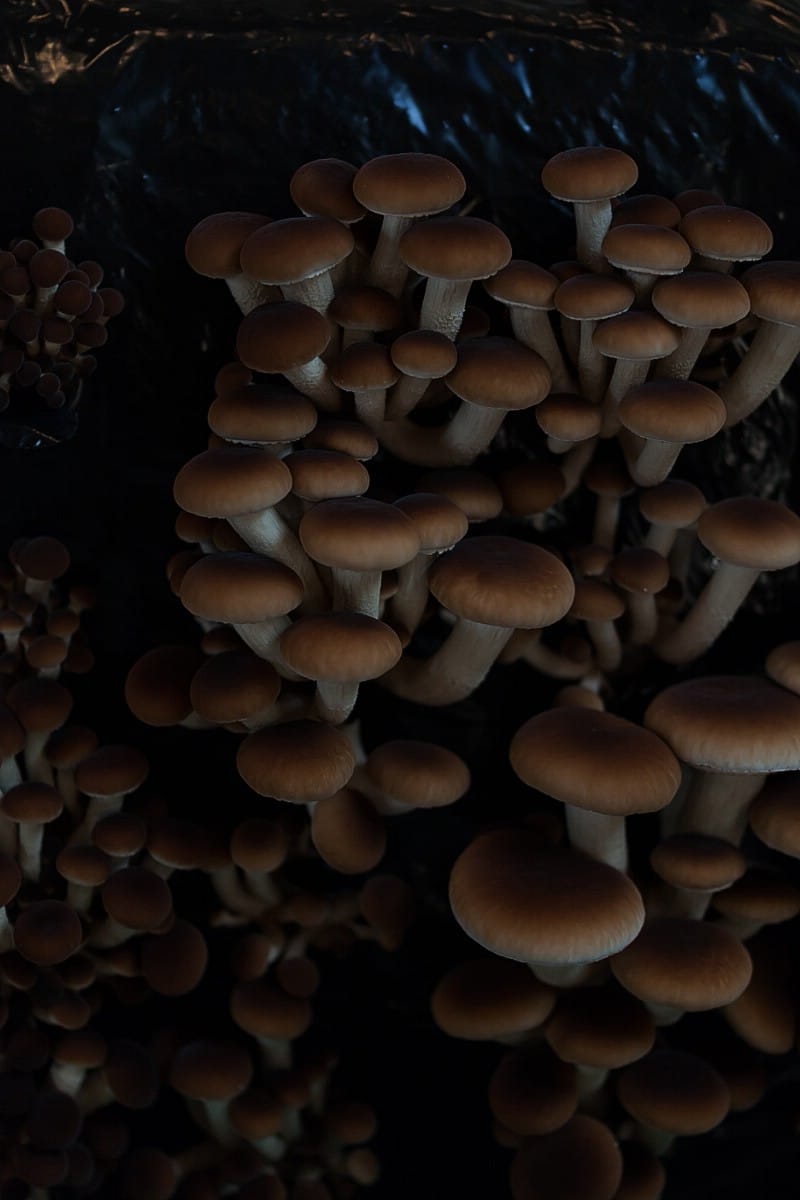
If you’ve always wanted to grow your own mushrooms but aren’t sure where to start, the best place might be in your very own kitchen – in your coffee pot!
Mushrooms don’t grow in ordinary garden soil. They need a substrate. Coffee grounds make a phenomenal substrate since they are nutrient-dense and have already been sterilized when you brewed them. You can easily use them as a substrate for growing your own oyster or shiitake mushrooms!
8. Lawn Fertilizer
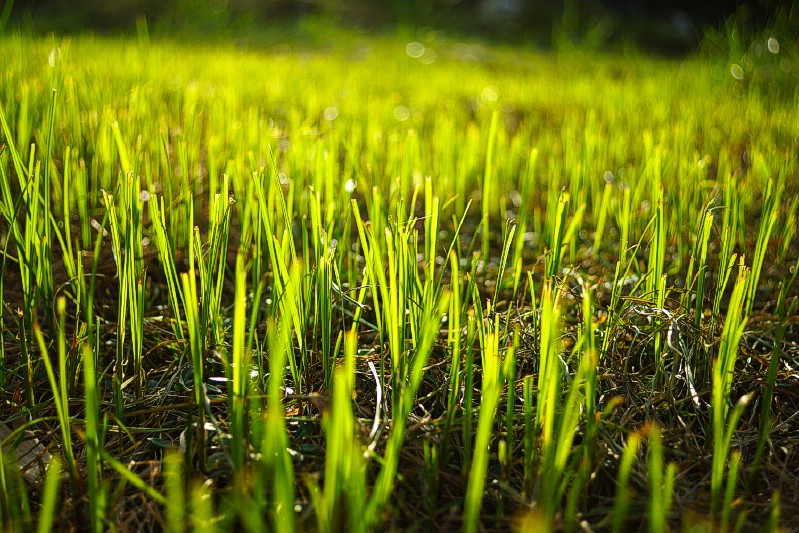
You don’t have to be growing a large vegetable garden in order to use coffee grounds. You can even use them to make your grass greener, healthier, and stronger! All you have to do is mix about half a pound of coffee grounds with five gallons of water. You can spray the fertilizer all over your lawn (with no clumping required).
Alternatively, you could use a rake to evenly distribute the bits of coffee.
9. Repel Snails and Slugs
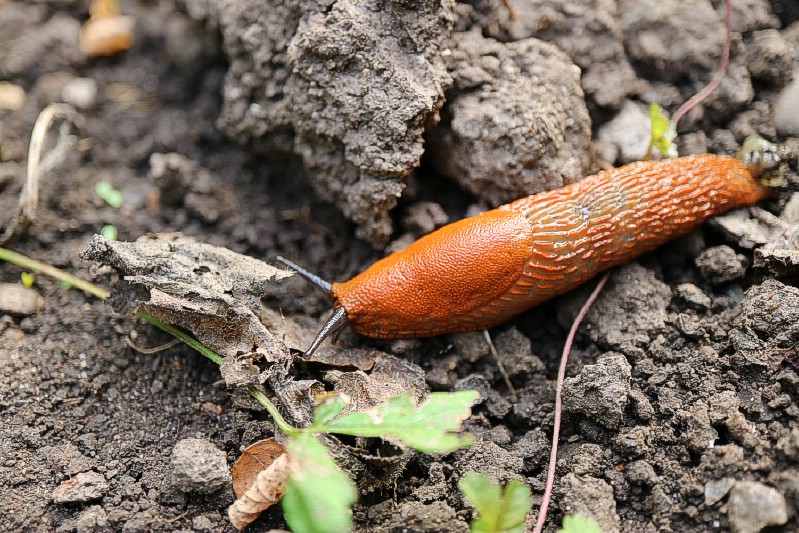
Snails and slugs are common garden pests, frequently targeting plants like broccoli, lettuce, and kale in their ravenous voyages. You can keep them away from your plants by sprinkling some coffee grounds around them or around the perimeter of your garden. They will avoid areas where the coffee grounds can be found.
There is some evidence to suggest that using coffee grounds in the garden can also help keep pests like rabbits at bay. Gardeners aren’t sure why this trick works, but some people suspect that it has to do with the high caffeine content of the additive.
Tips for Using Coffee Grounds in the Garden
Some people are nervous to use coffee grounds in their gardens, worried that the coffee will burn their plants or cause other undesirable effects.
In most cases, it is totally safe to sprinkle coffee grounds around your plants. Fresh coffee grounds are best used around plants that love acidic soil, like azalea, lilies, blueberries, and hydrangeas. Be careful using fresh grounds around certain vegetables, like tomatoes, which don’t respond well to the grounds.
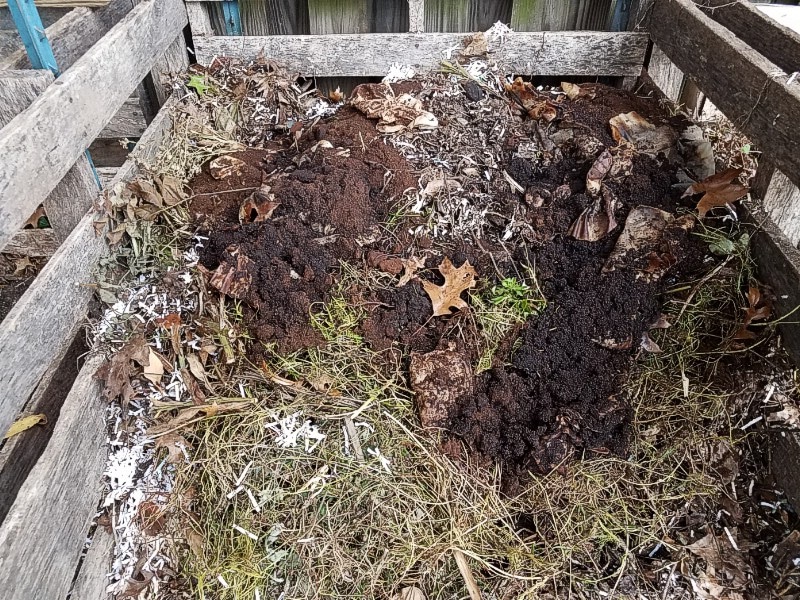
On the other hand, most root crops, including carrots and radishes, do just fine with coffee grounds. If you’re worried about what affects the caffeine content of the grounds might have on your plant, know that using decaffeinated coffee will provide many of these same benefits – but without the potentially harmful effects.
You also need to be careful about using coffee grounds around dogs. Large amounts of caffeine can seriously harm a dog, so be mindful of the risk if you have a dog that likes to taste everything he comes into contact with!
The best plants to use coffee grounds in your garden are those that love nitrogen, including corn, spinach, and other leafy greens. Roses also love the occasional caffeine jolt from coffee grounds!
Why You Should Use Coffee Grounds in the Garden
Coffee grounds and gardening go together like peas and carrots – and your peas and carrots are sure to benefit from a few coffee grounds, too! The next time you make your morning cup of coffee, don’t toss the grounds and filter into the trash. Instead, consider saving them for one of these nine ways to use coffee grounds in the garden.
Your plants will thank you!
Related Content
This post was first published here

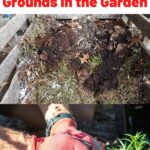

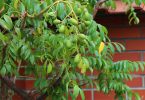


Leave a Comment
You have to login first to post a comment. You can register if you have no account yet.